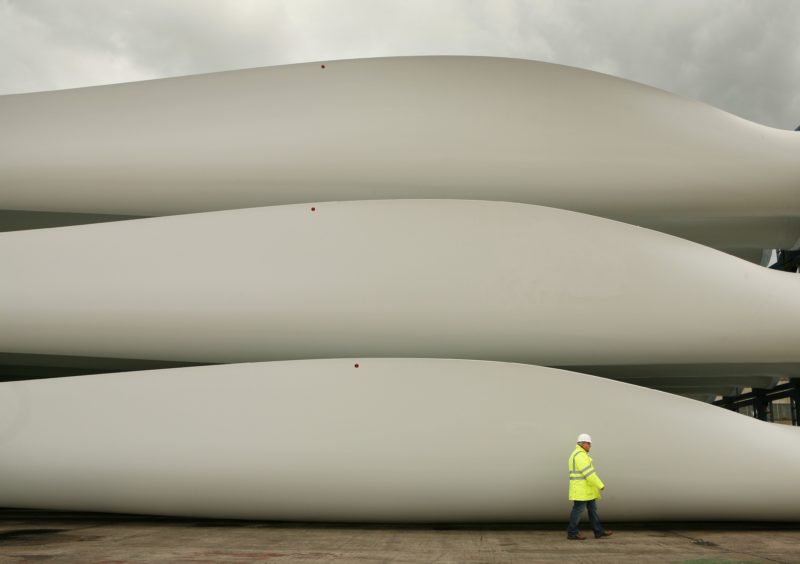
A cross-sector approach to wind turbine blade recycling could lead to the UK becoming a global leader in the field.
A new report from the Energy Transition Alliance found there’s “huge opportunity” for the UK, with around 14,000 turbine blades due to reach the end of their usable life within the next three years.
By 2023, it is forecast that up to 50,000 tonnes of composite material could be recovered and recycled for a variety of re-use applications.
By driving forward a better understanding of the circular economy, the possibility of disposal in landfill or incineration can be avoided and liability reduced.
The Energy Transition Alliance is a collaboration between the Aberdeen-based Net Zero Technology Centre, formerly the OGTC, and the Offshore Renewable Energy (ORE) Catapult.
The alliance aims to transform the energy sector and accelerate the UK’s transition to net zero.
In recent times, there has been “significant investment” within the renewable energy sector to improve installation, operations and maintenance.
But the focus is shifting to sustainable end-of-life management, with the first offshore wind farms approaching decommissioning in the next ten years.
Over the next three decades the industry faces significant growth in the scale of turbines expected to be decommissioned.
Accordingly it is seeking solutions for lifetime extension and more sustainable end-of-life management, such as repowering and circular economy practices.
This latest report follows a similar study that found an extra 20,000 jobs could be created by recycling and reusing wind turbine blades.
Discussing the report and its findings, Pamela Lomoro, Project Manager at the NZTC said: “Wind energy has already proven to be a key contributor in supporting the move to net zero; however, the early generation of turbines are now being decommissioned and replaced with higher capacity models.
“This report shows that significant progress has been made in the research, development and deployment of renewable technology. The industry has now turned its focus to the end-of-life and decommissioning phases, where it is looking to replicate this success.
“The report illustrates what can be achieved in this industry if we can develop a collaborative approach that involves all sectors striving for sustainable decommissioning. With input from manufacturers through to end users, we can reinvent how wind turbines are recycled.”
Over the past 30 years, the drive to achieve higher energy yields and economic efficiency has led to turbine designs of increasing sizes and high-performance materials.
While wind turbines are widely expected to be up to 90% recyclable, the blades, which are made from composite layers of stiff carbon or glass fibres in a resin matrix, are notoriously challenging to reclaim and reprocess.
They remain the most significant hurdle to achieving full wind turbine recyclability.
Lorna Bennet, project lead at ORE Catapult said: “The innovation challenge to create a circular economy within the wind industry is vast, but hugely exciting. This is a significant opportunity for the supply chain, given the huge volume of decommissioning and industry expansion ahead.
“The best solution is likely to come from a multi-sector approach because of the economies of scale required to create a market for recycled material. Likewise, the drive for better practices in recycling techniques and to develop better research and technologies will come from innovation and cross-industry collaboration.
“WindEurope estimates that 10% of all composite material waste will come from the wind sector over the coming years. It is a massive opportunity and with the right funding, policy direction and appetite, we could see the UK become a global leader in circular economy solutions.”
Recommended for you

